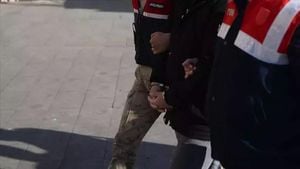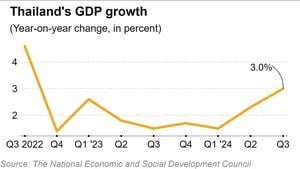On February 19, 2025, Culiacán experienced another round of intense military operations targeting key figures within the notorious Cártel de Sinaloa. The Mexican Army, alongside the Guardia Nacional, conducted raids across various neighborhoods, leading to significant arrests and heightened security measures.
The most notable apprehension was José Ángel Canobbio Inzunza, known as "El Güerito," who was arrested during operations focusing on the Las Quintas area of Culiacán. Described by authorities as one of the principal financial operators for the faction of the cartel led by Iván Archivaldo Guzmán Salazar, "El Güerito" is believed to be instrumental in planning drug trafficking routes for substances like fentanilo and methamphetamines. He faced existing warrants for drug trafficking and distribution charges from the United States, indicating his high-profile status within the cartel’s ranks.
During the raids, soldiers and federal agents reportedly stormed residences, particularly focusing on one two-story house in Tierra Blanca. Eyewitness footage displays military personnel breaching the home and searching for escape routes, potentially linked to tunnel systems used for distributing narcotics. An aerial assault with helicopters reinforces the gravity of the operation, signaling the escalated response to cartel activities as the local authorities aim to reclaim control.
The day of the arrest was marked by reports of gunfire across Culiacán, with some areas experiencing punctured tires on vehicles and the discovery of abandoned cars. These incidents occurred amid the mobilization of federal troops, indicating the cartel's retaliatory capabilities or efforts to distract law enforcement from the main operations targeting its leaders.
Earlier communications from Mexican security officials detailed the significant threat posed by crew members connected to the Cártel de Sinaloa’s factions, underscoring growing violence as various factions vie for power. This destabilization sparked broad military actions aimed explicitly at disrupting operational command chains within the cartel.
Further reinforcing the US-Mexico counter-narcotics dialogue, the Biden administration released statements declaring the Cártel de Sinaloa and other prominent Mexican drug organizations as foreign terrorist organizations. This classification paves the way for stricter sanctions and financial crackdowns on cartel operations, denoting increased pressure on Mexican law enforcement to act decisively against drug trafficking activities.
The arrest of "El Güerito" and his associates signals not only tactical victories for the Mexican government but also showcases the gravity of cartel influence. Concurrent with the arrests, fellow associates like Kevin Alonso Gil Acosta, alias "El 200," were simultaneously apprehended, emphasizing the coordinated nature of the federal response.
Acosta, another identifiable leader within the Cártel de Sinaloa, played key roles as a chief security operator for the faction and was actively involved in various criminal enterprises, strengthening the government’s assertion of significant internal cartel organization disrupting public safety. His arrest, along with his family member during the same operation, amplifies the diminishing tolerance for cartel-associated violent crime.
Authorities expect the raids and inspections to continue as intelligence operations identify more potential targets. The military’s systematic approach to locating and disrupting cartel strongholds underlines the challenges faced by law enforcement personnel as they wrestle against entrenched criminal activities.
Past records link both "El Güerito" and Acosta to various violent episodes, including the notorious 2019 Culiacanazo - where government forces attempted to detain Ovidio Guzmán López, son of the notorious Joaquín "El Chapo" Guzmán, which led to extensive violence and military aggression by cartel members. This violent encounter highlighted the inevitability of confrontation between federal forces and cartel operatives and the necessity for implementing stronger strategies to mitigate potential violence.
By capturing high-profile figures amid rising instability, Mexican authorities aim not just for immediate enforcement action but for longer-term effectiveness aimed at fracturing the chains of drug trafficking systems. The conclusion of these developments suggests not merely tactical success but position shifts within the broader framework of Mexican drug war conversations, pressing the need for collaborative law enforcement measures across national borders.
Although the operations mark significant steps forward against cartel-related activities, the continuous threat remains imminent as remnants of cartel operations remain active and defining Spain’s security challenges. With the U.S. firmly backing these efforts under newly classified designations, the ramifications of these arrests ripple beyond Mexico to open discussions around structured efforts to tackle the crisis with systemic approaches.



